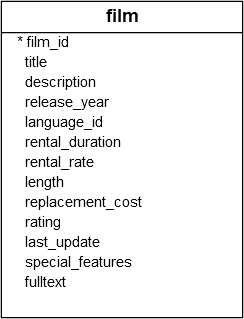PostgreSQL AND Operator
Summary: in this tutorial, you will learn about the PostgreSQL AND logical operator and how to use it to combine multiple boolean expressions.
Introduction to the PostgreSQL AND operator
In PostgreSQL, a boolean value can have one of three values: true, false, and null.
PostgreSQL uses true, 't', 'true', 'y', 'yes', '1' to represent true and false, 'f', 'false', 'n', 'no', and '0' to represent false.
A boolean expression is an expression that evaluates to a boolean value. For example, the expression 1=1 is a boolean expression that evaluates to true:
SELECT 1 = 1 AS result;Output:
result
--------
t
(1 row)The letter t in the output indicates the value of true.
The AND operator is a logical operator that combines two boolean expressions.
Here’s the basic syntax of the AND operator:
expression1 AND expression2In this syntax, expression1 and expression2 are boolean expressions that evaluate to true, false, or null.
The AND operator returns true only if both expressions are true. It returns false if one of the expressions is false. Otherwise, it returns null.
The following table shows the results of the AND operator when combining true, false, and null.
| AND | True | False | Null |
|---|---|---|---|
| True | True | False | Null |
| False | False | False | False |
| Null | Null | False | Null |
In practice, you often use the AND operator in a WHERE clause to ensure that all specified expressions must be true for a row to be included in the result set.
PostgreSQL AND operator
Let’s explore some examples of using the AND operator.
1) Basic PostgreSQL AND operator examples
The following example uses the AND operator to combine two true values, which returns true:
SELECT true AND true AS result;Output:
result
--------
t
(1 row)The following statement uses the AND operator to combine true with false, which returns false:
SELECT true AND false AS result;Output:
result
--------
f
(1 row)The following example uses the AND operator to combine true with null, which returns null:
SELECT true AND null AS result;Output:
result
--------
null
(1 row)The following example uses the AND operator to combine false with false, which returns false:
SELECT false AND false AS result;Output:
result
--------
f
(1 row)The following example uses the AND operator to combine false with null, which returns false:
SELECT false AND null AS result;Output:
result
--------
f
(1 row)The following example uses the AND operator to combine null with null, which returns null:
SELECT null and null AS result;Output:
result
--------
null
(1 row)2) Using the AND operator in the WHERE clause
We’ll use the film table from the sample database for the demonstration:
 The following example uses the
The following example uses the AND operator in the WHERE clause to find the films that have a length greater than 180 and a rental rate less than 1:
SELECT
title,
length,
rental_rate
FROM
film
WHERE
length > 180
AND rental_rate < 1;Output:
title | length | rental_rate
--------------------+--------+-------------
Catch Amistad | 183 | 0.99
Haunting Pianist | 181 | 0.99
Intrigue Worst | 181 | 0.99
Love Suicides | 181 | 0.99
Runaway Tenenbaums | 181 | 0.99
Smoochy Control | 184 | 0.99
Sorority Queen | 184 | 0.99
Theory Mermaid | 184 | 0.99
Wild Apollo | 181 | 0.99
Young Language | 183 | 0.99
(10 rows)Summary
- Use the
ANDoperator to combine multiple boolean expressions.